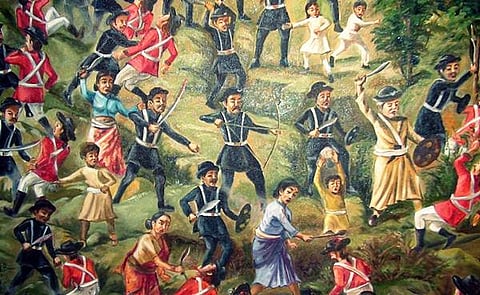Diary of a disastrous campaign
The history of the British East India Company was mostly written by the Company itself. It emphasises military victories, such as the late-eighteenth-century campaigns against the Marathas or the Kingdom of Mysore; and it dwells on episodes of heroism and tragedy which serve to expose the perfidy of the natives (the 'Black Hole of Calcutta'). Although they are now seen in a different light, such events still mark the way. There is little space in the story for Captain Kinloch's invasion of Nepal. Yet, in his failure, Kinloch helped to draw the map of contemporary Southasia no less than his luckier colleagues in the Deccan.
Nepali historians have dwelt on the historic destiny of Prithvi Narayan Shah the Great, who in the mid eighteenth century forged the Gorkhali empire in the hills as a bulwark against the firingis in the plains. His patriotism was so great, he defended Nepali independence before it was invented. These historians record that Kinloch's expedition was routed by the Gorkhali army at Sindhuli – the first of several occasions when Gorkha courage or nationalism kept the overbearing power to the south at bay. His defeat has been treated as inevitable, and significant mainly in entrenching the Gorkhalis' abiding suspicion of the British.

